Borealis Flume Review
By Dustin Carlson
Do you ever find yourself looking out the kitchen window at a barren wasteland of frozen tundra covered in snow? Do you ever think to yourself, while looking out that window, why can’t it be spring, so I can start riding my bike again? If this sounds like you, snap out of it! There is a world of good times and adventure waiting! All you need is the right bike, like a Borealis Flume.
Borealis, as most reading this know, is top of the line in fat bikes. The Crestone model is as good as it gets, but might be out of some folk’s bike budget. The Flume is an aluminum version, with much of the same geometry, and is much more affordable. It retains a lot of what makes the Crestone so great. 1X11 drivetrain, HED rims wrapped with 45NRTH Husker Du rubber, SRAM hydraulic brakes, custom Borealis/Ergon seat, carbon handlebars, carbon fork, etc. All of these parts add up to a frozen tundra riding machine! Base price for the Flume is $2,449. Price as tested, with HED rims, $3,049.
In addition to the premium components, there are many thoughtful touches on the frame. Routing for an internal or external dropper post, routing for a front derailleur, and through axles front and rear. Also, the Flume has two features that have been glaringly absent on other fat bikes I’ve tested. These two things drive me crazy because they are so simple, but are often times missing. First, frame protection. Borealis has protection on the down tube as well as the drive side chainstay. These two spots get beat up so fast. Second, a 150 mm wide rigid fork. It kills me to see a 135 mm rigid fork on a fat bike because it limits the aftermarket suspension forks you can use. Unless you buy a third wheel just to have around for 150 mm forks. Small features, but big wins in my book.
Because of the race winning pedigree of Borealis, I was excited to start riding this bike. From the upgraded HED rims to the Ergon seat. I’ve wanted to try these parts out on my personal bikes for a long time.
My first few rides were on dry trails since it hadn’t snowed yet. I could tell right away that this bike was made to ride long distances really fast. It has a comfortable riding position and is very light with the carbon fork, 28 lbs. HED rims and 4” tires make the bike playful and maneuverable. The flume also climbs very well. This bike was designed with cross country riders in mind.
When it finally started snowing, this bike really started to shine. Husker Dus are great in the fresh or packed snow and I really appreciated it being lightweight and maneuverable. There is nothing worse that wrestling with a big heavy bike while tip toeing on narrow single track. My personal fat bike has 4.8” wheels and tends to wallow around in the snow. 4” seemed to be a great size to cut through and keep right on going.
I can picture the Flume on snowmobile trails, riding for hours just enjoying the outdoors, but it wouldn’t be a proper review without some gnarly trails! I threw on a Wren suspension fork (again, happy about the 150mm front hub) and drove to Moab. I went to a perennial favorite, the Klondike trail system. Moab gets plenty cold, but the snow doesn’t stay on the trails for long.
The Flume took everything in stride. The most glaring change from riding snow pack was the Wren. I have the fork setup for 120 mm travel. It weighs 3 lbs. more than the rigid fork, 3 mm taller at the head tube, and raked the bike out from 70 to 68 degrees. Since the fork has a good lock-out, the bike climbed almost as good as stock. It obviously handled rough trail much better with some squish. My main concern, any time I take a fat bike on rough trails like this, are the wheels. The Husker Dus are pretty light and are designed to ride packed snow. I started having problems four miles into a six mile lap, losing tire pressure in the rear. Upon inspection I thought I had just “burped” the tubeless wheel. I started pumping air without putting in a tube. It turns out I had bent the aluminum HED rim. Not catastrophic, but bad enough that it wouldn’t hold air. While pulling the back tire to put in a tube, the front tire went flat. It turned out that both rims were damaged. I only brought one tube so I had to keep pumping up the front tire, and I babied it all the way back to the truck.
I feel partially responsible for the damage. I didn’t do anything one would call excessive, but I think the wheels on our test bike were not designed to handle big hits (confirmed by HED). I was probably pushing the limits of what most fat-bikers would consider cross country riding when it happened. The video at the top of the page shows the whole thing (somewhere around the 4 minute mark). I probably shouldn’t have tested that wheelset out in Moab, but we gained a better understanding of the limits of what ultra light aluminum rims can handle. After reporting the damaged rims to Borealis, they were very reasonable. Essentially stating that normally customers are warned about aggressive terrain and big hits, and that there is a ‘trade off’ between weight and strength with the HED rims. I believe that our test results, support that assessment.
After having the Flume for a couple months, I feel like this bike excels at what it’s designed to do. If you find yourself staring out a window, wishing you could ride all day in the snow, this is the bike for you! It has a well thought out design and great specs for $3,049.


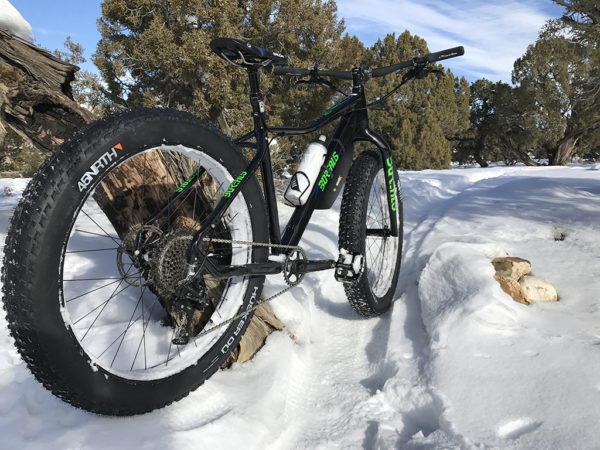
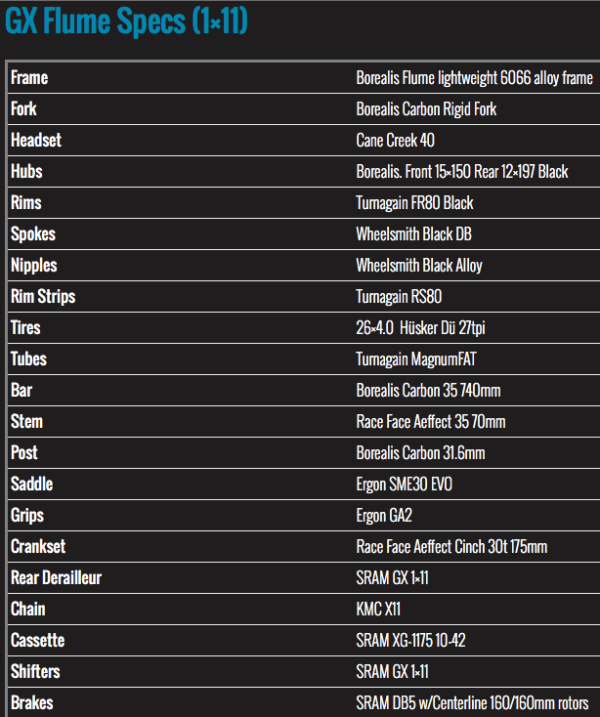



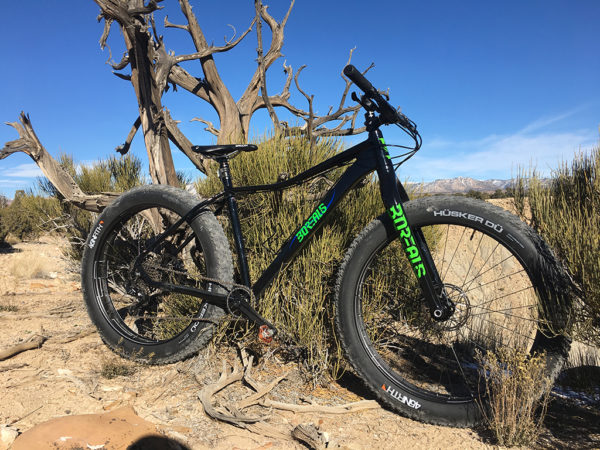


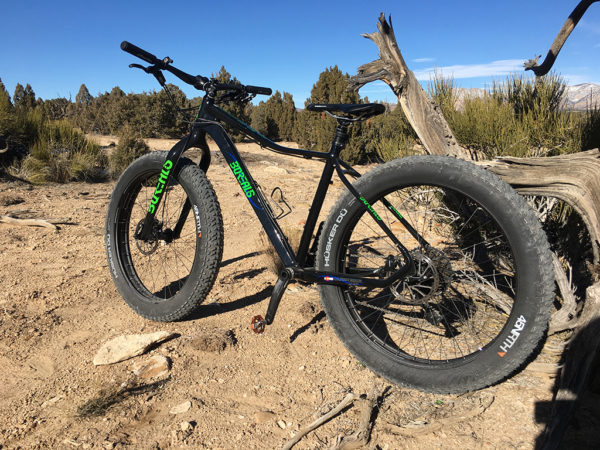
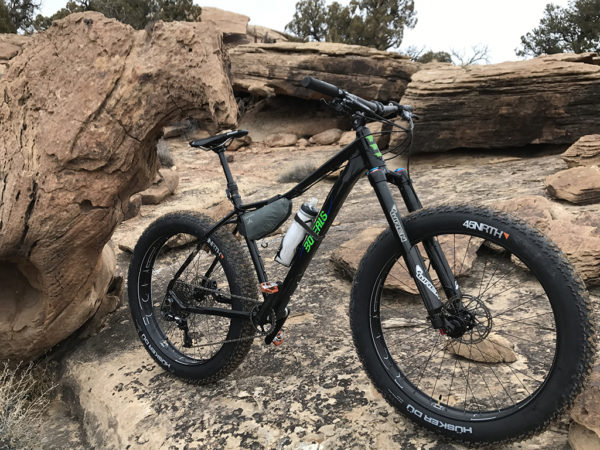

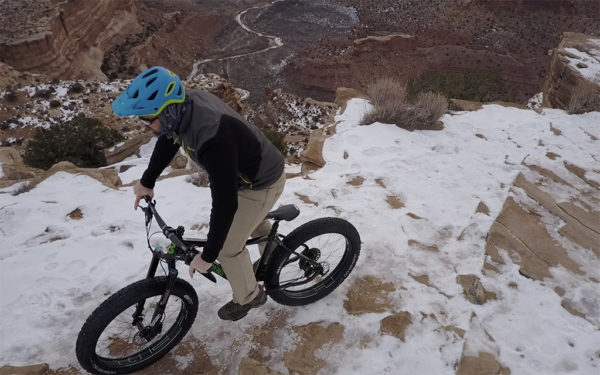
I had the exact same problem with the hed b.a.d. rims on tame Midwest single track. It happened on two separate occasions with greater than 10psi in each tire. Durability takes a hit only to improve weight savings. I learned my lesson.
Great writeup, Dustin! 😀
Great review Dustin! Sorry to hear you had rim issues. What did you think of the Husker Du’s?
I’m of the opinion that fat bikes with 3.8-4.0in tires ridden on rough dry trail should come equipped with e65mm (e = external width) rims and tire pressures should be somewhere between 13-17psi. I was riding my fat bike year round and my rims got beat with many nicks, dings, scrapes and flat spots. I had e80mm rims and labeled 3.8in wide tires that ran a little narrow and actually measured closer to 3.6in/91mm. The tire barely looks wider than the rim. I’ve now come to believe that the mounted tire should be at least 25mm/1in wider than the rim and wider would be better. When the tire bulges out more, the rim is protected. When the tire has higher pressures, the rim is protected. If you use an e80mm rim for trail riding, you want to use a minimum 4.2in wide tire when mounted to the rim. If you use an e65mm rim, you can use a tire that measures as small as 3.6in wide when mounted to the rim. Please realize that the width printed on the tire isn’t always the actual width when mount on the rim and tires commonly run a little narrower than the labeled width.
Great review! In my humble opinion… I don’t think you need to be consiliatory at all about the rims. I really think they should stand up to what you did there. It is a really valuable review for this reason, so thank you!
I had a very close call when riding at night and ramming into a curb I didn’t see. I dented the side of my Alex 80mm rim badly but it still holds air just fine even setup tubeless. I’ve seen soft rims from different companies before and it’s not fun. I wonder how many HED rims have had this issue.
I’m surprised to see that they chose to spec 27tpi (cheaper and heavier) tires instead of 120tpi. Unless it’s a durability choice. On a 3K bike I’d want nice tires since they make the largest performance difference.